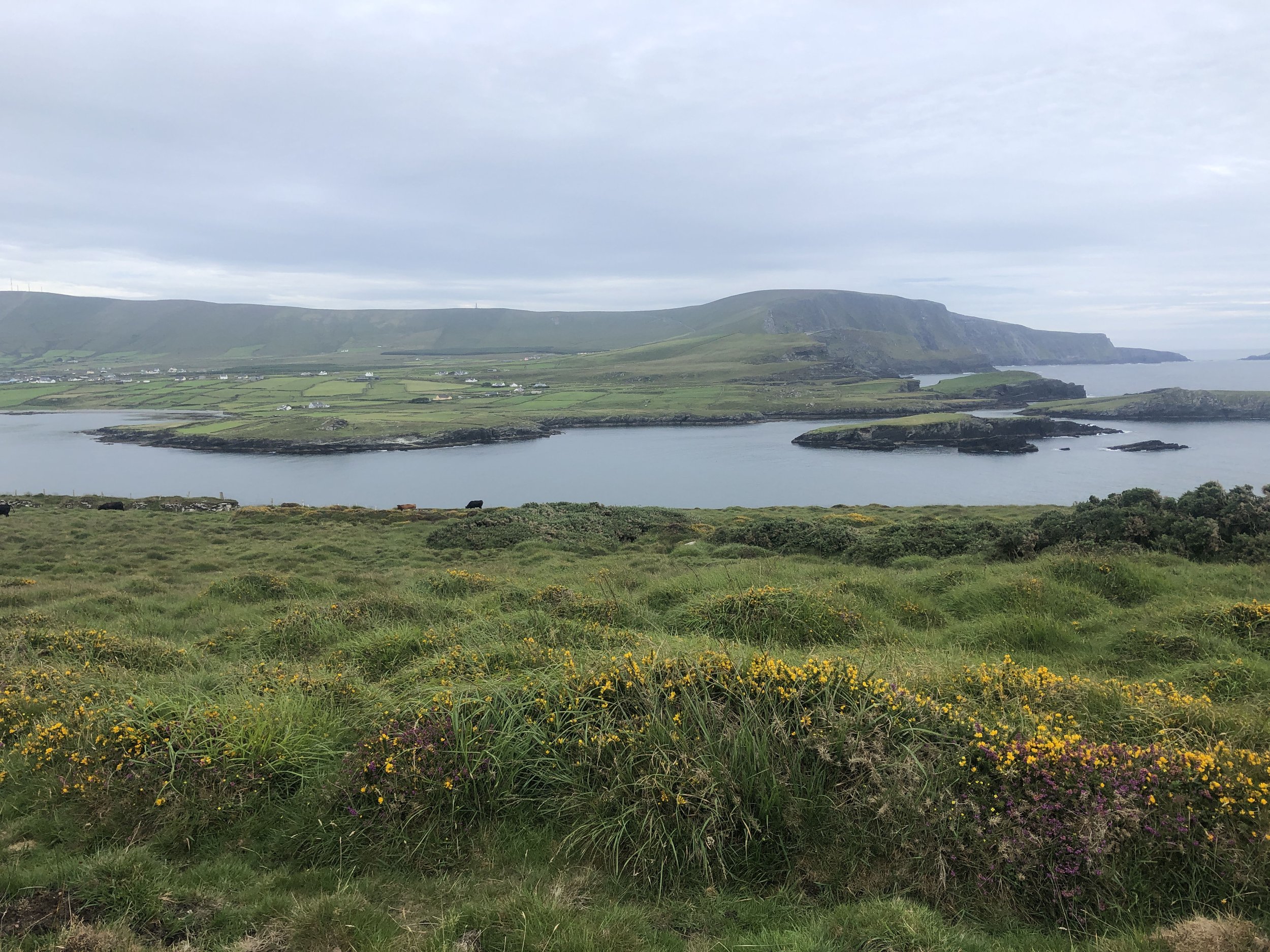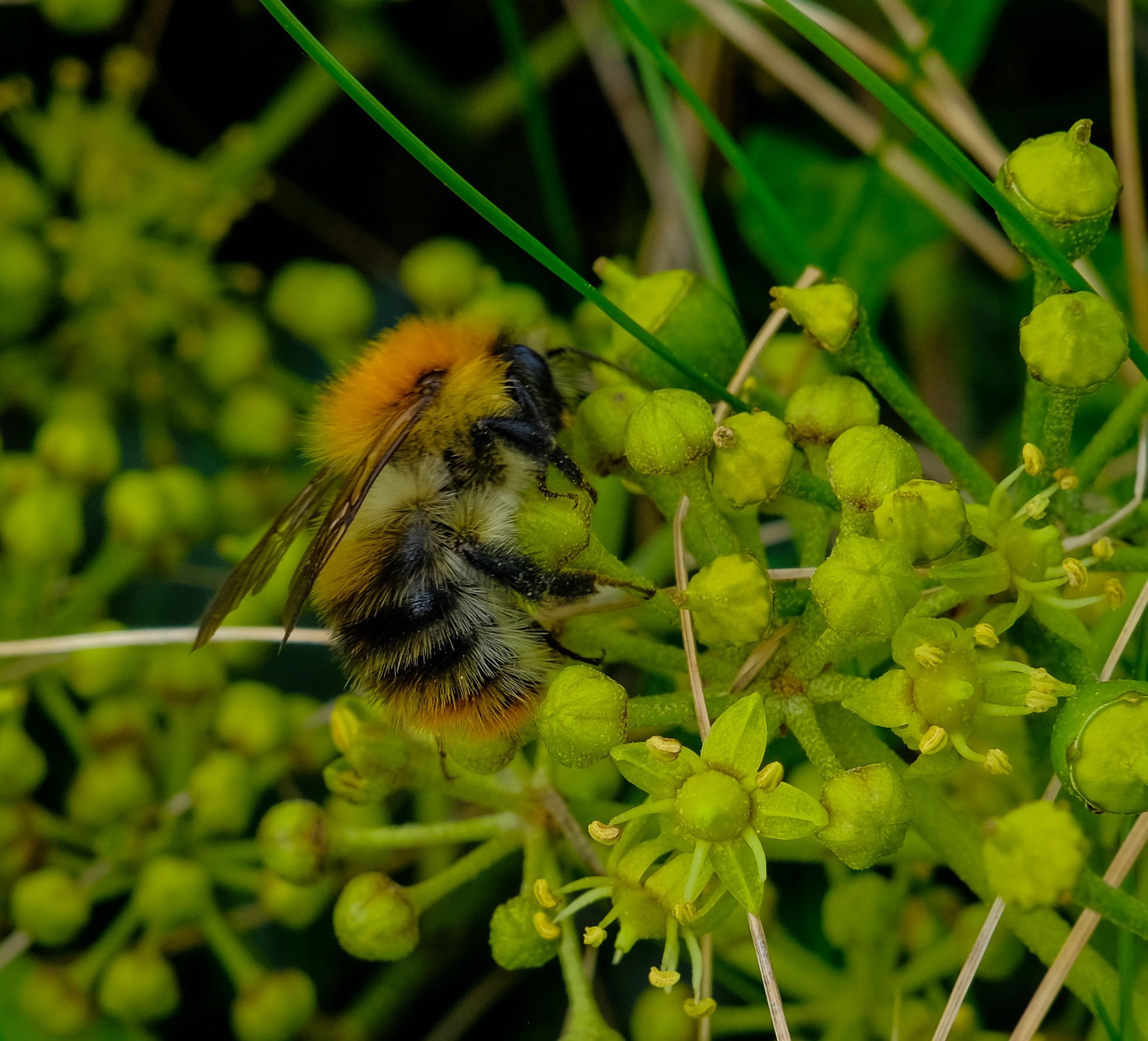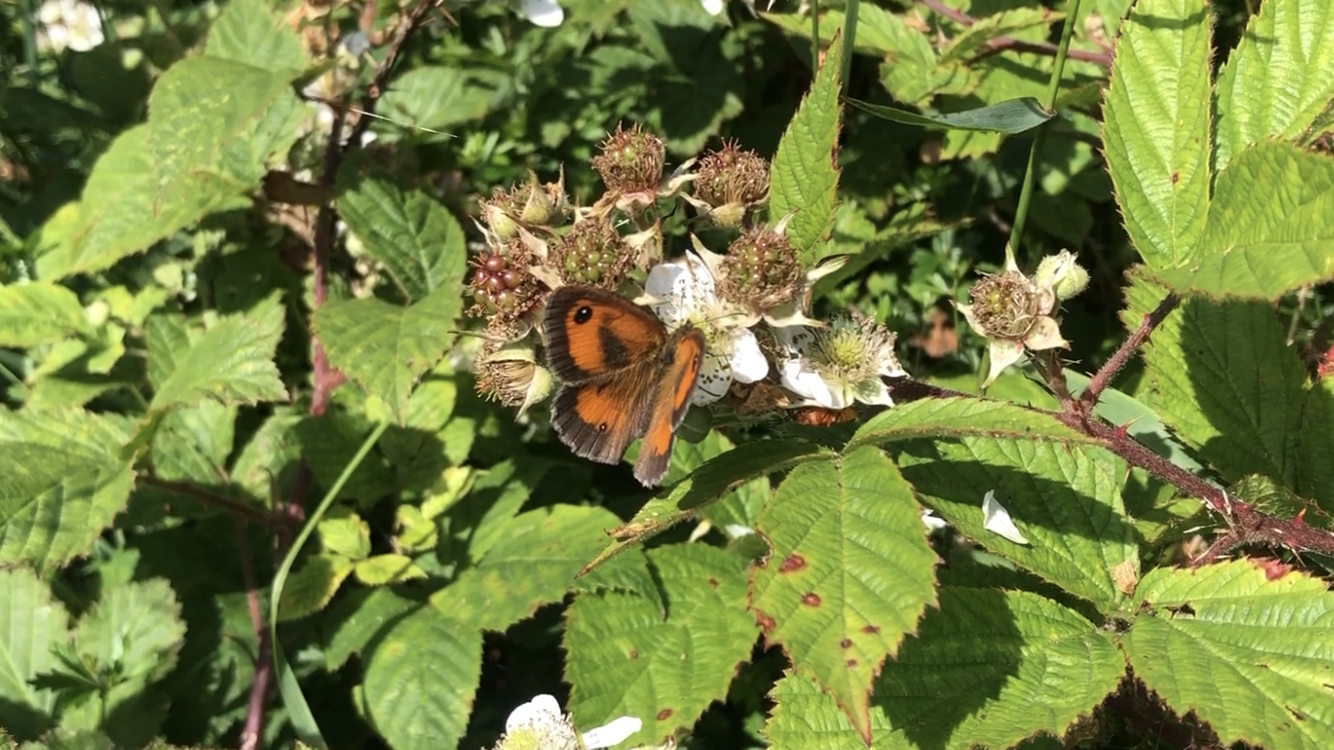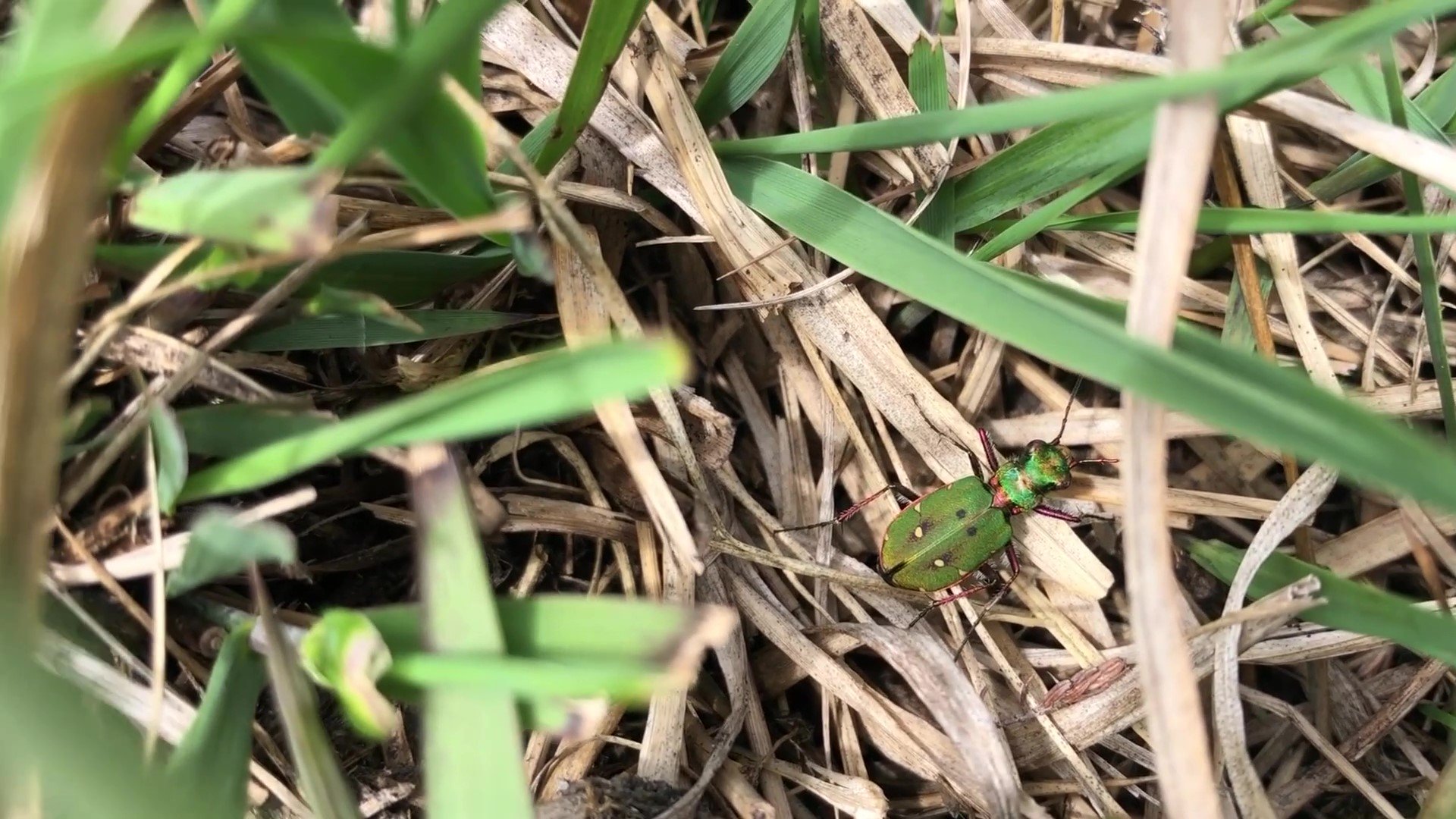Farmland Wildlife
Farmland covers much of the Iveragh peninsula and is home to many of our native species.
Farmland Wildlife
Iveragh’s farms are not only home to cattle and sheep. Many species, from the smallest invertebrates to top predators, benefit from the variety of habitats found across the farmland of Iveragh. Many of these are also important pollinators and all of them are part of the complex network that comprises our native plants and animals. Some of the wildlife on our farms are of conservation concern, which means that their populations are declining. Without the habitat that Iveragh’s farmland provides, these species might be at risk of local extinction. Just a few of these species are described below.
In this beautiful earth bank lining a pasture near Killoe, a variety of grasses grow alongside flowering plants such as dandelion, hawkweed, scabious, foxglove and gorse. These are hugely valuable for our wildlife.
Bees, butterflies and moths
Bees and butterflies require native wild plants where they can feed throughout their lifecycles. Sometimes they need different plants at different stages. They also need places to shelter and to spend the winter.
Large carder bee
Pictured here is the 'near-threatened' Large carder bumblebee, one of our native bumblebee species, foraging on heather, a very important food source for insect pollinators in Iveragh's coastal and upland areas. Many of our bumblebees and solitary bees rely on hedgerows, earth banks, and walls for shelter and food.
Common carder bee and ivy
Not only are field boundaries important as nesting habitat, but their flowering plants, such as ivy and willow, provide an abundance of nectar and pollen for species like the Common carder bumblebee.
Solitary bees
Iveragh's earth banks and stone walls host a number of solitary bee species that nest within exposed soil or cavities in the stone. 'Blood bees' get their name from their blood-red abdomen. This group lacks hair, as they do not collect pollen for their young. Instead, they steal the food of other solitary bees.
Leaf-cutter bees
‘Leaf-cutter bees’ are another of Ireland's 79 species of solitary bee. Their name comes from their method of ever-so-neatly cutting out pieces of leaves, with which, they line their nests within cavities of rocks and stone walls.
Small heath butterfly
The small heath is a 'near-threatened' species of butterfly. They are often seen basking in Iveragh's uplands and bogs where the lack of disturbance (reseeding, fertilisers, pesticides) retains the fine-leaved grasses that their larvae feed on.
Grayling butterfly
The grayling is another 'near-threatened' butterfly that, despite its camouflage, can be found within the complex of bare ground, rock and sparse vegetation in Iveragh's extensively farmed grasslands and heath. Their caterpillars feed on tufted grass and hair grasses.
Wall brown
Due to severe declines in recent decades, the 'Wall' butterfly is classed as 'endangered' in Ireland. Iveragh's rocky, coastal grasslands and stone-earth banks are a good place to find these butterflies basking.
Gatekeeper
The 'near-threatened' Gatekeeper is a beautiful, but rather uncommon butterfly in Iveragh. Its preferred habitats are sheltered and warm areas with plenty of woody shrubs, and the kinds of fine-leaved grasses that their larvae depend on.
Cinnabar moth
Through spring and summer in Iveragh, encounters with the larvae of butterflies or moths are common. These Cinnabar moth caterpillars feed on ragwort before eventually emerging as a beautiful red and black moth.
Other invertebrates
Kerry slug
A native of the Iberian Peninsula and southwest Ireland, the Kerry Slug is at home in the high humidity and acidic soils of Iveragh. In the photo, the lichens, mosses, liverworts and grasses growing around a medieval hut site on Valentia Island provide an ample food supply.
Ant colony
Ants are an important food source for many farmland birds. Their colonies frequently appear as small mounds throughout Iveragh's coastal and upland grasslands.
Green Tiger Beetle
Beetles and their larvae are often found roving through a variety of farmland habitats. Green Tiger Beetles are predators that hunt ants, spiders and caterpillars in our extensively managed grasslands and heath. Other species will feed on fungi or plant material.
Grasshopper
During spring and late summer, Iveragh's grasslands, heathlands, earth banks and hedgerows are great spots to search for crickets and grasshoppers. We have multiple species of each.
Reptiles and amphibians
Common lizard
Extensive grazing maintains patches of bare earth, rock and short vegetation for common lizards to move freely, hunt and bask in the sun, while also retaining taller vegetation and scrub where lizards seek shelter from predators.
Iveragh's stone walls and earth banks provide the perfect mix of basking sites (earth, rock, short grass), food sources (spiders, flies, worms) and shelter (dense vegetation, stones) that common lizards require.
Common frog
Iveragh's bogs and wet grasslands also support common frogs and the insects they rely on. In spring, look for frogspawn in streams, ditches and even along some rural roadways.
Farmland birds
Stonechat
Stonechats are a staple of Iveragh’s landscape, where dense thickets of gorse and brambles provide them with the cover they need for nesting. Their brief, but distinctive, 'thack-thack' call is often given as they perch atop fenceposts.
Meadow pipit
Meadow pipits are ‘Red-listed’, meaning they are of high conservation concern. These birds nest on the ground, relying on the cover of tall tussocky grasses or heather. But they also forage for insects and seeds in more open patches of grassland, which are maintained by livestock grazing.
Skylark
From high overhead, the Skylark's call is a special treat in Iveragh's sand dunes, heathlands, bogs and grasslands in spring and early summer. This ‘Amber-listed’ species is of medium conservation concern. Much like the meadow pipit, they are a ground-nesting species that rely on a varied vegetation structure.
Kestrel
Common kestrels are a 'Red-listed' bird of prey. They are often seen 'praying' over Iveragh's farmland, in search of rodents, small birds or insects. Iveragh's cliff faces and abandoned buildings are useful nest sites, while our bogs, heathlands and grasslands support the kestrel's prey populations.
Wheatear
A spring-arrival to Iveragh, the northern wheatear is common in our sand dunes, grasslands and heathlands. This 'Amber-listed' species can be seen perching on stone walls or ruins where they nest.
Red-billed chough
Another 'Amber-listed' species, the red-billed chough has a strong association with low-intensity farmland along Ireland's Atlantic coastline. In Iveragh, they can be seen throughout the year foraging for invertebrates in well-grazed grasslands and on earth banks.
Grey wagtail
The 'Red-listed' grey wagtail has declined by nearly 50% in the past 20 years. It is a colourful resident of Iveragh's river valleys and streams. Here, it feeds on a range of insects, larvae and molluscs and nests under bridges or in crevices of other stone structures.
Sparrowhawk
As our hedgerows and earth banks support populations of songbirds, predators like sparrowhawks that hunt these smaller birds benefit from the presence of these features in Iveragh's farming landscape.
Farmland mammals
Irish mountain hare
Irish hares are at home in areas of natural and semi-natural vegetation, particularly where they can find cover amongst tall grasses, rushes and heather. Much of Iveragh's extensively managed upland, lowland and coastal farmland fits this description.


























